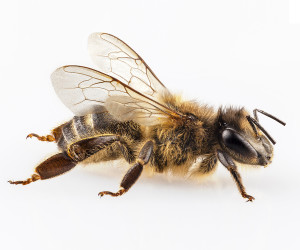Bees
Pest Control Tips: Bee Treatments
When seeking the removal of a bee infestation on your property, the best possible solution is to work with a local beekeeper. Bees are absolutely vital for keeping the environment healthy, as plants depend on pollination to reproduce and grow.
We do treat other stinging insects. See our Wasps page.
How to Identify a Bee Infestation
Signs of infestation are dependent on species but most often the workers and the nest are the most common signs. Though it is recommended to leave it to a professional to properly identify the particular species living near your home, here are a few facts that might help you identify your pest:
- Bees can be black or brown with red, yellow or lustrous blue stripes
- While some bees are solitary, other species such as honeybees and bumblebees are very social.
- All bees have hair; it is a crucial trait for collecting pollen.
- Bee nest identification can be difficult because the design of each nest varies by species.
How to Prevent a Bee Infestation
- Keep garbage cans closed and clean so that bees and wasps are unable to feed on food residues.
- Keep fallen fruit from fruit trees cleaned up.
- Seal all potential entries with durable materials, like metal screen and caulk.
Possible Health Concerns
The most common health concern related to bees and wasps are stings, which may induce severe allergic reactions in some individuals.
About Bees
- There are 9 different families of bees and around 20,000 known species.
- Beeswax comes from glands in the abdomen of a worker bee, they use the wax to make the walls and caps of the comb.
- A bee’s buzz is not produced by the beating of its wings but by vibrating muscles.
